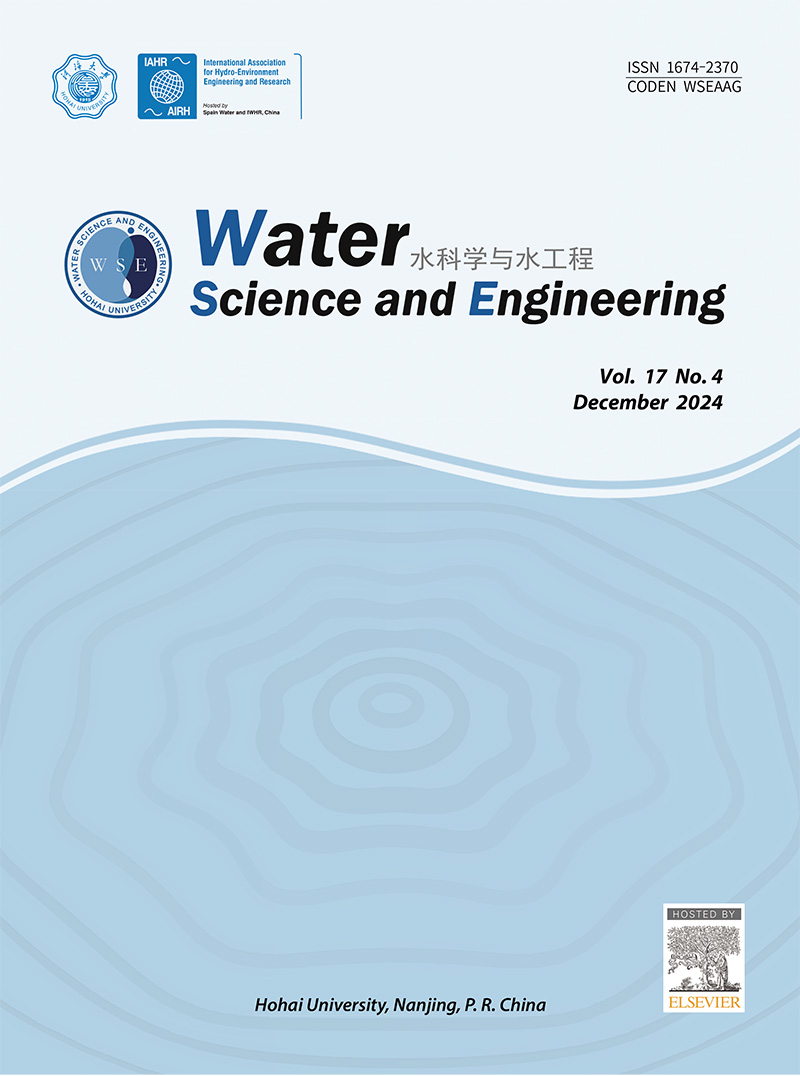Ciprofloxacin (CIP)-polluted water treatment via a facile mechanochemical route: Influencing factors and mechanism insights
IF 4.3
Q1 WATER RESOURCES
引用次数: 0
Abstract
Degrading ciprofloxacin (CIP)-polluted water has recently emerged as an urgent environmental issue. This study introduced mechanochemical treatment (MCT) as an innovative and underexplored approach for the degradation of CIP in water. The influence of various additives (CaO, Fe2O3, SiO2, Al, and Fe) on CIP degradation efficiency was investigated. Additionally, six types of composite additives (Fe–CaO, Fe–Fe2O3, Fe–SiO2, Fe–Al, Al–SiO2, and Al–CaO) were explored, with the composite of 20% Fe and 80% SiO2 exhibiting notable performance. The impacts of additive content, pH value, and co-existing ions on CIP degradation efficiency were investigated. Furthermore, the effectiveness of MCT in degrading other medical pollutants (norfloxacin, ofloxacin, and enrofloxacin) was verified. The transformations and changes in the crystal structure, oxidation state, microstructure, and morphology of the Fe–SiO2 composite additive were characterized using X-ray diffraction, X-ray photoelectron spectroscopy, and scanning electron microscopy techniques. This study proposed a sigmoid trend kinetic model (the Delogu model) that better elucidates the MCT process. Three plausible degradation pathways were discussed based on intermediate substance identification and pertinent literature. This study not only establishes a pathway for the facile degradation of CIP pollutants through MCT but also contributes to advancements in wastewater treatment methodologies.
通过简便的机械化学方法处理环丙沙星 (CIP) 污染的水:影响因素和机理启示
环丙沙星(CIP)污染水体的降解是近年来迫切需要解决的环境问题。本研究介绍了机械化学处理(MCT)作为一种创新的和尚未开发的方法来降解水中的CIP。考察了不同添加剂(CaO、Fe2O3、SiO2、Al和Fe)对CIP降解效率的影响。此外,还研究了Fe - cao、Fe - fe2o3、Fe - SiO2、Fe - al、Al-SiO2和Al-CaO 6种复合添加剂,其中20% Fe和80% SiO2的复合添加剂表现出显著的性能。考察了添加剂含量、pH值和共存离子对CIP降解效率的影响。此外,还验证了MCT对其他医用污染物(诺氟沙星、氧氟沙星、恩诺沙星)的降解效果。利用x射线衍射、x射线光电子能谱和扫描电镜技术对Fe-SiO2复合添加剂的晶体结构、氧化态、微观结构和形貌的转变和变化进行了表征。本研究提出的s型趋势动力学模型(Delogu模型)能更好地解释MCT过程。根据中间物质的鉴定和相关文献,讨论了三种可能的降解途径。本研究不仅建立了通过MCT快速降解CIP污染物的途径,而且有助于污水处理方法的进步。
本文章由计算机程序翻译,如有差异,请以英文原文为准。
求助全文
约1分钟内获得全文
求助全文
来源期刊

Water science and engineering
WATER RESOURCES-
CiteScore
6.60
自引率
5.00%
发文量
573
审稿时长
50 weeks
期刊介绍:
Water Science and Engineering journal is an international, peer-reviewed research publication covering new concepts, theories, methods, and techniques related to water issues. The journal aims to publish research that helps advance the theoretical and practical understanding of water resources, aquatic environment, aquatic ecology, and water engineering, with emphases placed on the innovation and applicability of science and technology in large-scale hydropower project construction, large river and lake regulation, inter-basin water transfer, hydroelectric energy development, ecological restoration, the development of new materials, and sustainable utilization of water resources.
 求助内容:
求助内容: 应助结果提醒方式:
应助结果提醒方式:


